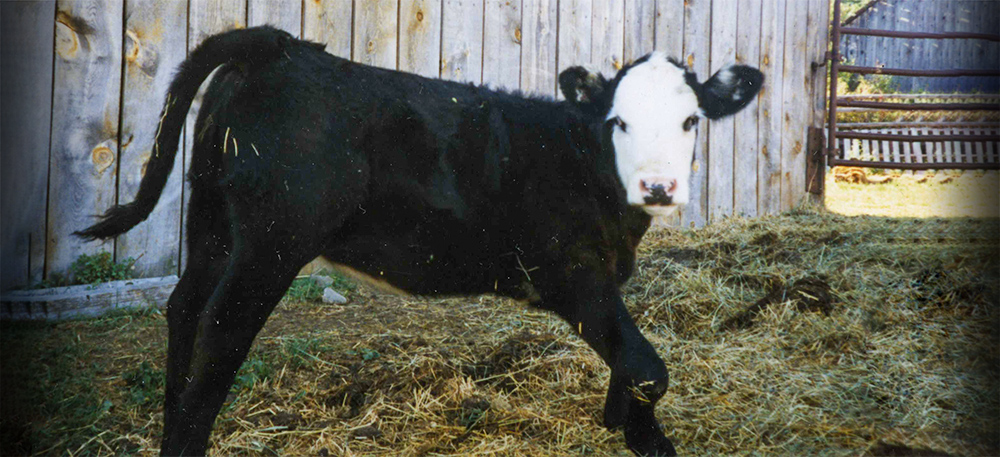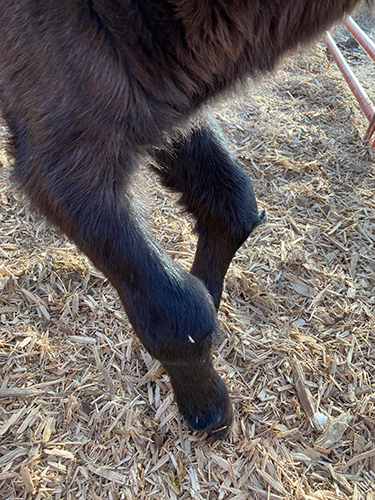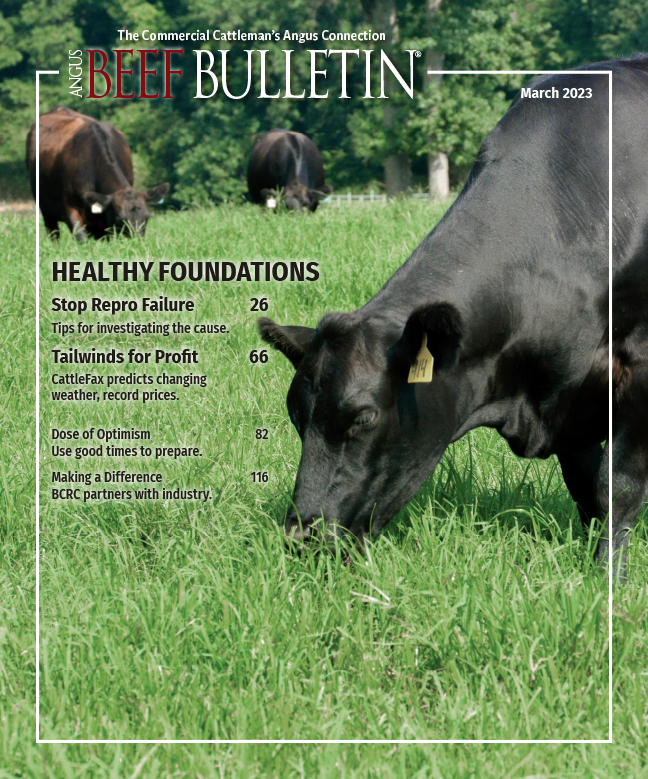
Lupine and Other Toxic Plants Can Cause Crooked Calves
With no known treatments for deformed calves, the best strategy is to prevent pregnant cattle from eating lupine.
This calving season, several ranchers in the Lemhi Valley of Idaho are seeing the tragedy of what happens when certain plant toxins are ingested by a pregnant cow between 40 and 100 days of pregnancy. These toxins cause malformations in the skeleton of the developing fetus. Usually the main detrimental effects are in leg joints and sometimes the spinal column. Occasionally, a calf is born with a cleft palate.
Often the legs are crooked and don’t move or bend properly. This can be a problem during birth. Affected limbs may not straighten enough to enter the birth canal. Most of these calves can be delivered with assistance unless the deformity is severe. In those situations the calf must be surgically removed by C-section; although sometimes a veterinarian will dissect the calf in utero and bring it out vaginally in pieces.
George Barrington, veterinarian and recent retiree from Washington State University (WSU), says there are many cases of crooked calves in his state from lupine.
“Years ago, WSU was involved in research projects in north-central Washington, looking at crooked calves, but there hasn’t been much new research. We know the toxins involved, and prevention is primarily aimed at strategies to avoid exposure to those plants when cows are in the risky time of pregnancy,” he says.
There are many species of lupine, Barrington says. “Some have more toxins than others. In the Pacific Northwest, there are about 14 species associated with problems in calves. Toxin levels can vary with plant stages of growth.”
Weather can make a difference, he adds. If lupine is one of the first plants growing, ahead of the grass, cattle may eat more than they would later in the spring when grass is abundant.
If cattle are turned out on lupine-bearing pastures too early, or the pasture is overgrazed and there isn’t much grass, cattle are less selective in what they eat and may consume too much lupine. Some cattle will eat it regardless of how much other forage is in the pasture. Lupine is a legume and fairly nutritious.
“The most dependable prevention is to not graze cattle in lupine-dominated pastures when cows are between 40 and 100 days’ gestation when the fetus is most susceptible to negative effects,” Barrington says.
Some ranchers don’t have a choice when they graze those pastures, however, as in the case of a Bureau of Land Management (BLM) or U.S. Forest Service allotment. The rancher can only use these allotments at a certain time every year. There’s not much flexibility for management.
“Some people recommend fencing those areas off, but it may not be practical, or even allowed, on federal land allotments,” he says. On private ground, a person can spray lupine and get rid of it; however, it’s not legal to spray on public land.

The alkaloids in lupine act as a sedative, making the fetus slow or stop its movement. The legs become stiff or fixed in abnormal positions as a result. |
One strategy is to adjust the breeding season and rotate pastures carefully, trying to put pregnant cows in lupine-free areas during that critical 40-to-100-day window, or use lupine-covered rangeland with nonpregnant animals like stocker steers. Some ranchers are trying fall calving, but this doesn’t work very well in the Northwest and Rocky Mountain regions where winters are cold and lactation demands on those cows would be much greater.
There are other causes of fused joints and crooked legs in calves, including some genetic conditions and a few infectious diseases, Barrington notes. “A disease called Cache Valley virus is associated with similar defects, and bluetongue virus can also do this, to a minor extent.”
Other toxic plants can also cause fetal defects. Poison hemlock can be a problem; whereas, water hemlock is so toxic that even a small dose kills the cow.
“Water hemlock affects the heart; the animals may die right where they eat it. Poison hemlock, by contrast, contains an alkaloid similar to that in lupine,” says Barrington. The alkaloids act as a sedative, and the sedated fetus doesn’t move enough. The legs become stiff or fixed in abnormal positions.
The fetus may have one or more limbs affected, or the spine. The abnormal joints are permanently malformed; there isn’t much you can do for those. With mild deformity the calf can get up and around and grow big enough to be harvested. If deformity is severe, the calf may not survive birth or may have to be euthanized.
Editor’s note: Heather Smith Thomas is a freelance writer and cattlewoman from Salmon, Idaho.



